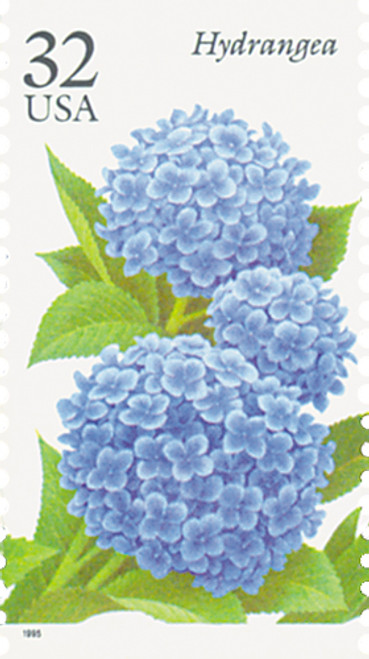
1995 32c Fall Garden Flowers: Aster
# 2993 - 1995 32c Fall Garden Flowers: Aster
$0.35 - $3.20
U.S. #2993
1995 32¢ Aster
Fall Garden Flowers
1995 32¢ Aster
Fall Garden Flowers
Issue Date: September 16, 1995
City: Encinitas, CA
Quantity: 200,000,000
Printed By: Bureau of Engraving and Printing
Printing Method: Lithographed and engraved
Perforations: 10.9 vertical
Color: Multicolored
City: Encinitas, CA
Quantity: 200,000,000
Printed By: Bureau of Engraving and Printing
Printing Method: Lithographed and engraved
Perforations: 10.9 vertical
Color: Multicolored
Aster
Asters are members of the daisy family and thrive as wild or as cultivated flowers. Named after the Greek word for “star,” legends say Virgo sowed them from stardust. Another legend says they sprang from the tears of the goddess Asterea, who grieved upon seeing a devastated Earth after the great Flood. Also known as “starwort” and “eye of Christ,” asters were long believed to have magical powers. In ancient Greece, wreaths of asters adorned the altars of all the gods. Down through the centuries, some people burned aster leaves to keep away evil spirits, while others ground aster roots to cure sickly bees and the bite of mad dogs.
Europeans discovered over 200 varieties of aster in North America. In 1637, John Tradescant, Jr. introduced these “star flowers” to Europe and they soon became a favorite garden flower. Two very popular asters are the New England and the New York varieties. The showy Chinese aster, while similar, is not really an aster at all.
Most asters are perennials that come in a variety of colors and bloom in late summer or early fall. One dark purple variety blooms in late September, coinciding with the Feast of St. Michael, and is known as the Michaelmas daisy.
U.S. #2993
1995 32¢ Aster
Fall Garden Flowers
1995 32¢ Aster
Fall Garden Flowers
Issue Date: September 16, 1995
City: Encinitas, CA
Quantity: 200,000,000
Printed By: Bureau of Engraving and Printing
Printing Method: Lithographed and engraved
Perforations: 10.9 vertical
Color: Multicolored
City: Encinitas, CA
Quantity: 200,000,000
Printed By: Bureau of Engraving and Printing
Printing Method: Lithographed and engraved
Perforations: 10.9 vertical
Color: Multicolored
Aster
Asters are members of the daisy family and thrive as wild or as cultivated flowers. Named after the Greek word for “star,” legends say Virgo sowed them from stardust. Another legend says they sprang from the tears of the goddess Asterea, who grieved upon seeing a devastated Earth after the great Flood. Also known as “starwort” and “eye of Christ,” asters were long believed to have magical powers. In ancient Greece, wreaths of asters adorned the altars of all the gods. Down through the centuries, some people burned aster leaves to keep away evil spirits, while others ground aster roots to cure sickly bees and the bite of mad dogs.
Europeans discovered over 200 varieties of aster in North America. In 1637, John Tradescant, Jr. introduced these “star flowers” to Europe and they soon became a favorite garden flower. Two very popular asters are the New England and the New York varieties. The showy Chinese aster, while similar, is not really an aster at all.
Most asters are perennials that come in a variety of colors and bloom in late summer or early fall. One dark purple variety blooms in late September, coinciding with the Feast of St. Michael, and is known as the Michaelmas daisy.














